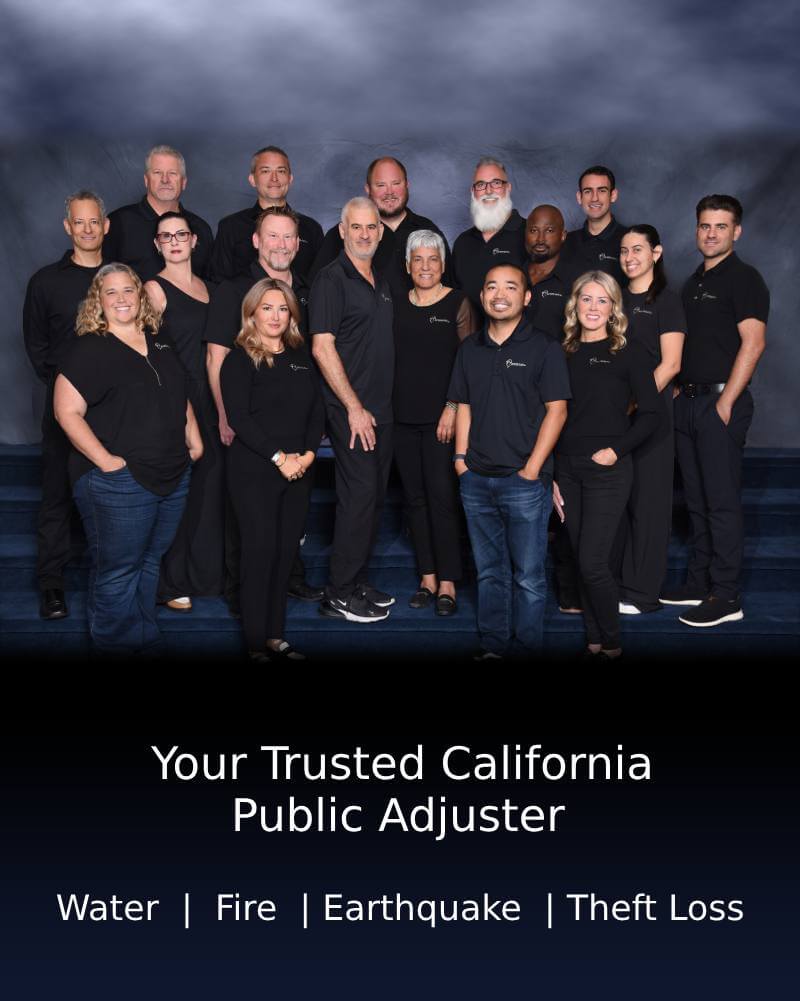How Smoke Damage Impacts Your Fire Damage Insurance Claim
Suffering fire damage to your home is one of the worst nightmares for any homeowner. Watching your house and possessions engulfed in flames is a traumatic experience.
Many homeowners are so focused on what damage the fire has caused that they don’t even think about the implications of smoke damage. Smoke damage often appears insignificant next to fire damage. However, it can have a significant impact on your fire damage insurance claim.

Identifying Smoke Damage
Most people have heard the saying: “where there’s smoke – there’s fire.” Well, when it comes to residential fires, the opposite principle also holds true!
Many people identify smoke damage based on telltale signs such as soot, discoloration of walls and other surfaces, and nasty odors. However, to understand the full nature of smoke damage, we have to look beyond the obvious physical signs.
Statistics show that in less than five minutes the heat from a house fire can exceed 1100 degrees Fahrenheit. And a house fire can reach up to 2,552 degrees Fahrenheit. This generates a lot of smoke!
Smoke is composed of many airborne particulates. According to Honeywell, a typical house fire produces hundreds of chemicals, depending on the temperature, materials burnt and availability of oxygen.
Even if you can’t see smoke in your house, there could still be toxic smoke particulates present which is a health risk. As explained in our article about whether it’s safe to live in a house with smoke and fire damage, smoke can dissipate quickly, but it’s very invasive.
Smoke can creep into HVAC vents, electrical sockets, furnishings, insulation, etc. This can make it hard to comprehensively identify smoke damage, which is why you need professional help.
Note: For your safety, we suggest you use a certified industrial hygienist to test the air quality in your house after a fire.
Repairing Smoke Damage
Since smoke is very invasive it’s difficult for an average homeowner to clean and repair smoke damage. Special tools and equipment are typically required. And there are also safety considerations you need to be aware of.
For example, millions of homes contain asbestos and lead-based paint. If left undisturbed it’s typically not hazardous. However, during a fire microscopic asbestos fibers and lead particles might be released into the air.
You may need to enlist the services of an accredited asbestos and lead-based paint inspector. Based on their recommendations, you might have to hire an asbestos abatement contractor or lead remediation contractor.
Proper cleaning involves more than deodorizing furniture and masking the scent of smoke.
You’ll need to remove smoke particulates. If necessary, smoke remediation teams will set up containment units and run negative air filtration vacuums. These high-efficiency particulate air (HEPA) vacuums are very effective in clearing particulates and deodorizing your home.
Use a professional fire restoration company to clean and decontaminate your home.
Insurance Coverages for Smoke Damage
While every insurance policy is different, a standard homeowners insurance policy typically covers all interior and exterior smoke damage. Review your policy to ascertain your exact coverage.
Your homeowners insurance policy typically also includes Additional Living Expense (ALE) coverage (sometimes called loss of use coverage). It pays for expenses you have to incur, in addition to your regular expenses, if you cannot stay in your house because of damage caused by a covered event.
Potential Smoke Damage Insurance Issues
Although your homeowners insurance policy will usually cover smoke damage, there are many gray areas that might be difficult to resolve. It includes:
Inspections
Hiring a professional company to thoroughly investigate all damage, including hidden smoke damage can be expensive. Insurance companies might sometimes be reluctant to pay for proper inspections. However, having a large or complex claim inspected and evaluated by only the insurance adjuster that your insurer appointed isn’t sufficient.
Repair, Replace or Match?
In principle, repairs should return your home to a “uniform and consistent appearance” even if it means replacing partially undamaged items such as flooring. Insurance companies will often pressure you to accept similar looking products instead.
Final Thoughts
Homeowners typically don’t have a lot of experience negotiating with insurance adjusters. And insurance adjusters are known to often ask misleading questions that might reduce the liability of the insurance company.
Remember, insurance adjusters always look after the best interests of your insurance company.
Trying to manage a large or complex fire damage insurance claim that involves smoke damage can be difficult and time-consuming. You might encounter many challenges you’re ill-prepared for that can cost you dearly.
Hiring a public adjuster can help! A public adjuster looks after YOUR best interests, not the best interests of your insurance company.
Avner Gat, Inc. has 20 years of experience as a public adjuster in Southern California. We protect homeowners from the games and fine print that insurance companies are known for.
Call us at (818) 917-5256 to find out how we can help you to get the best settlement offer for smoke and fire damage.



































